Submitted:
05 October 2023
Posted:
06 October 2023
You are already at the latest version
Abstract
Keywords:
1. Introduction
2. Geoforensics
- Their pre-mortem presence on the scene.
- Their walking route on the site.
- The possible transfer of the victim’s corpse in secondary crimes scenes.
- The modality of victim’s death.
- Comparative analyses and provenance studies, based on mineralogical, petrographic, sedimentological, palaeontological, and geochemical investigations [38,39,40,41,42,43,44,45,46,47,48,49,50,51,52,53,54]. Forensic comparisons between two or multiple samples of geological and soil traces and micro traces are aimed to ascertain whether they originated from different sources [51]. When specimens result indistinguishable, the possibility that a single source is the provenance area of the samples cannot be excluded [51]. Such investigations may allow to link the actors of a crime (suspect and victim of a homicide) to the crime scene or the scene of events.
-
Mineralogical, geochemical, and palaeontological analyses.
-
Remote sensing, geological, geochemical activities, together with geophysical shallow prospections and applied geology investigations.These investigations [60,61,62,63,64,65,66,67,68,69,70,71,72,73], also based on comparative analyses, may allow to characterize the environmental matrices (soil and water) and the related underground in cases of environmental crimes. In particular, the remote sensing surveys for localizing MPFs, dens of terrorists, or in general illicit activities, are carried out on photos, ortho imaging, videos, and photograms, in the visible, ultraviolet, infrared, elaborated in GIS systems [61,62,64,65,66,67,68,69,70]. Such investigations may also be applied to depict and search for shallow clandestine gravesites and concealments [74,75,76,77,78,79,80,81,82,83,84,85,86,87,88,89,90,91,92].
- Colour.
- Particle size.
- Structure and texture.
- Fossil content.
- Mineralogy.
- Chemical and chemical-physical composition.
2. Criminal Casework
2. Materials and Methods
- Mechanical siever (Retsch AS 200 control model) with sieves (2000 µ, 1000 µ, 500 µ, 250 µ, 125 µ, 63 µ).
- Laser diffraction granulometer (Malvern Instruments Mastersizer 2000) equipped with workstation (Malvern Instruments) (Figure 3A).
- Motorized stereomicroscope equipped with Zeiss digital camera and workstation (image analysis software for morphometric investigations, Zeiss AXIOVISION) (Figure 3B).
- Stereomicroscope (Leica MZ 12, magnifications from 8X to 100X).
- Motorized stereomicroscope with reflected and transmitted polarized light (Zeiss Stereo Discovery.V20; magnification from 3.8X to 530X with optical zoom) equipped with Zeiss digital camera and workstation.
- Motorized petrographic optical microscope with reflected and transmitted polarized light (Zeiss Imager.M2m model, magnifications from 25X to 500X) equipped with Zeiss tele camera and workstation (Figure 3B).
- Optical microscope for biological use (Leitz Laborlux 12, magnifications from 40X to 1000X equipped with 12 MP digital camera (Apple Inc.).
- SEM (FEI QUANTA FEG 450 model, operating in low vacuum, chamber pressure of 50 Pa at 20.00 kV equipped with an energy dispersive X-ray analyser (SEM-EDS) and workstation (AMETEK) (Figure 3C).
3. Results on the Comparative Analyses
3.1. Geological Evidence
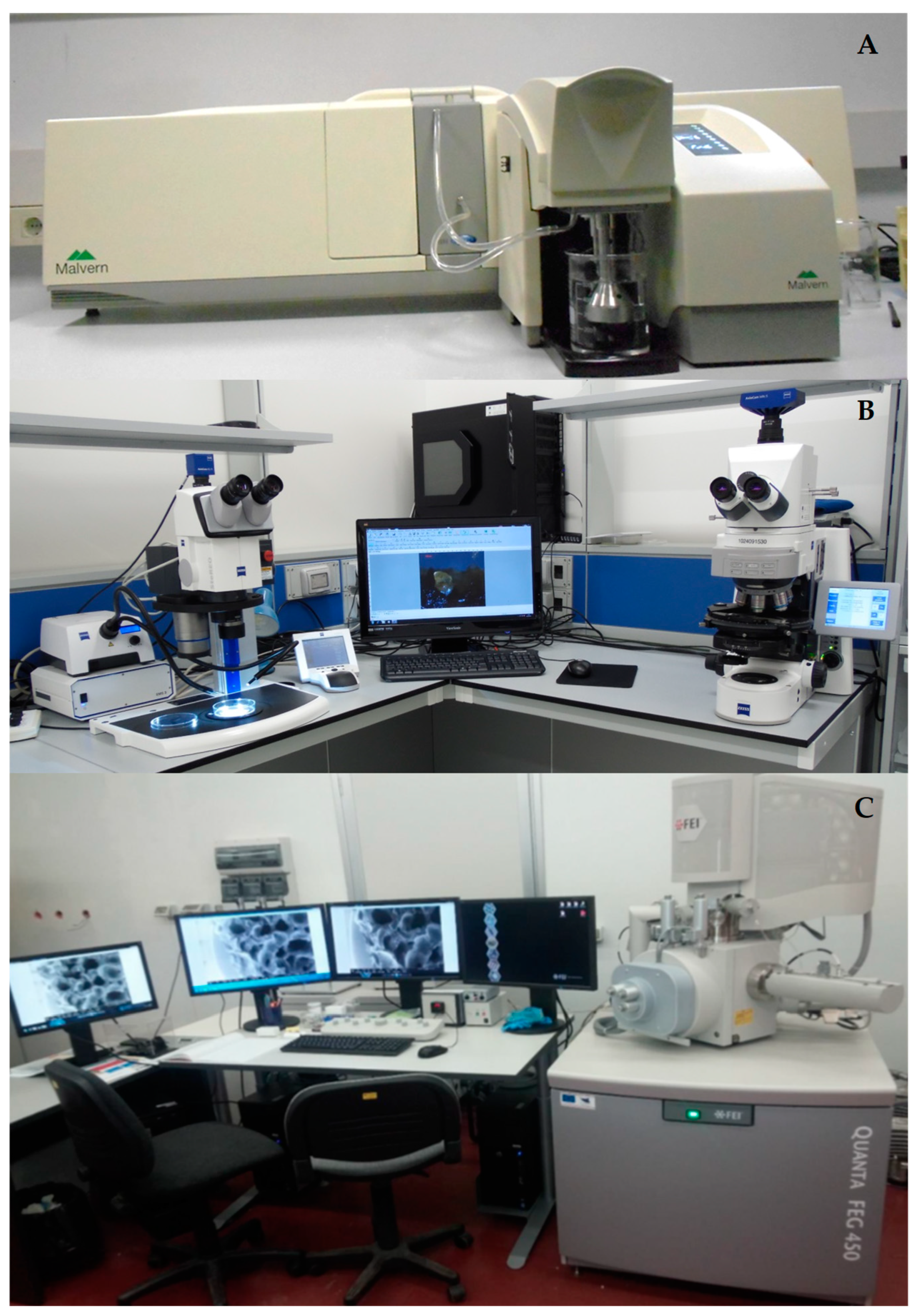
- i
- ID06 - Rounded and spherical hyaline clasts with yellow/orange coating with a percentage of sub-angular and lamellar grains.
- ii
- ID02 - Rounded hyaline grains with evidence of the original crystalline habitus with yellow/orange coating.
- iii
- ID03 - Rounded and spherical hyaline grains without coating.
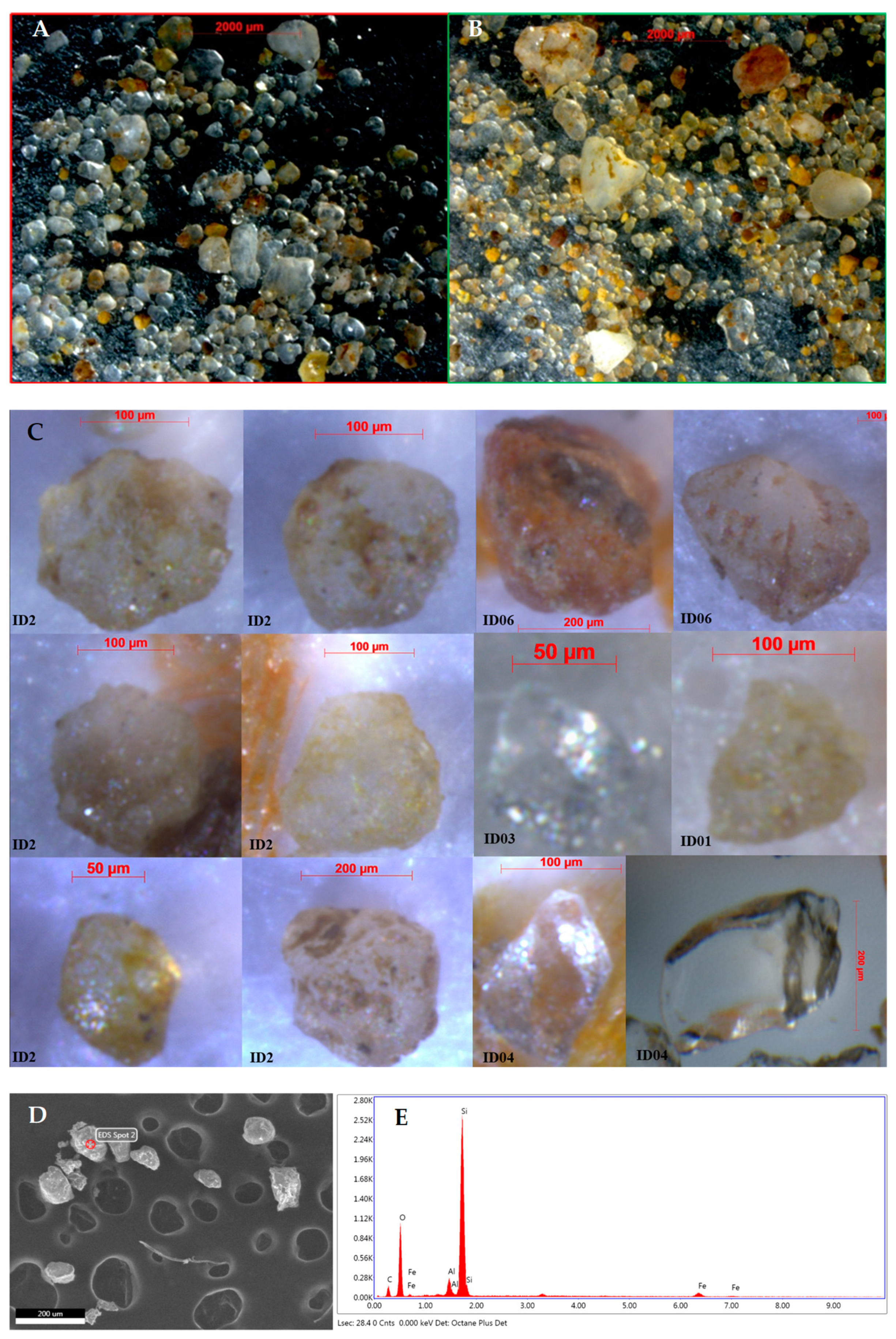
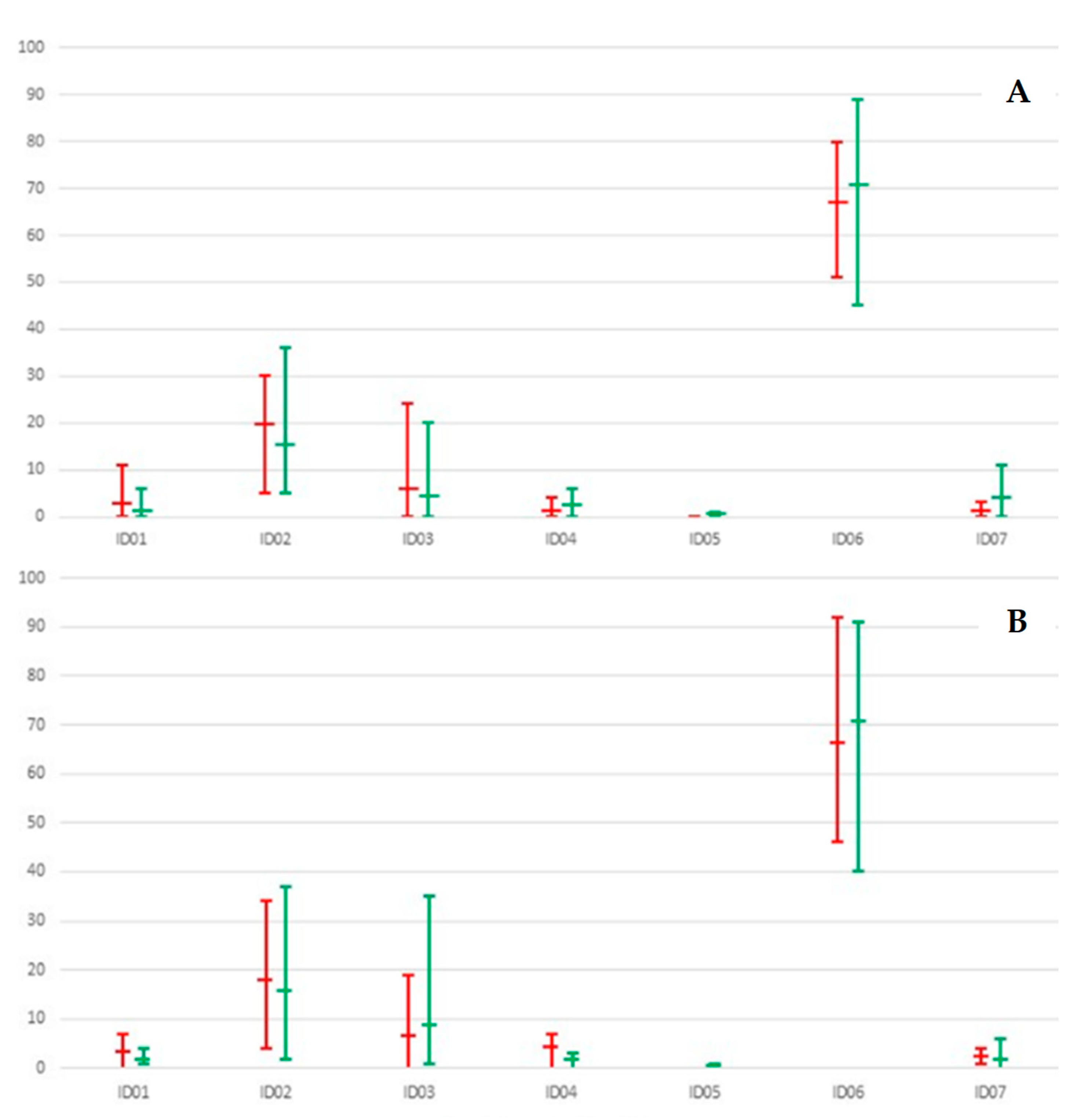
3.2. Botanical Evidence
- Erica arborea (leaves, capsules, seeds).
- Quercus suber (leaves, flowers, seeds).
- Olea europaea (leaves, seeds).
- Cistus monspeliensis (leaves, seeds, capsules, etc.).
- Pistacia lentiscus (leaves, seeds).
- Myrtus communis (leaves, seeds).
- Cytisus infestus (branches, legume, thorns).
- Smilax aspera (leaves, thorns).
- Rosa sempervirens (thorns).
- Rubus ulmifolius (thorns).
- Rosacea Amygdaloidea (thorns).
- Cynara cardunculus (thorns).
- Shrub formation with Mediterranean maquis (prevailing macro area).
- Area inside the highway perimeter.
- Meadow area with anthropic pressure from pasture with some puddles of freshwater with algae.
- Tree formation dominated by Sughera (Quercus suber L.) with a circumscribed zone showing abundant concentration of Erica arborea shrubs wood and soils rich in fresh to decomposed seeds of Erica arborea (about 6000 seeds of Erica arborea were examined and counted in the soils).
3.3. Tracing the Route Walked by the Two MPFs
- Rare particles of calcite and dolomite.
- Peculiar compositions of clay minerals rich in calcium phosphate.
- Peculiar assemblages of different classes of mineral grains.
- Vegetal remains of mm-sized thorns of Cynara cardunculus and Rosa sempervirens, seeds of Erica arborea, and assemblages of algae.
3.3.1. Car Accident (Table 3, Figure 6)
3.3.2. Match Point 1 (M1) (Table 3, Figure 6)
3.3.3. Exit (E1) (Table 3, Figure 6)
3.3.4. Match Linear Belt 2 (M2) (Table 3, Figure 6)
3.3.5. Match Point 3 (M3) (Table 3, Figure 6)
3.3.6. Match Point 4 (M4) (Table 3, Figure 6)
3.3.7. Match Point 5 (M5) (Table 3, Figure 6)
3.3.8. Exit Point (E2) (Table 3, Figure 6)
3.3.9. Match Point 6 (M6) (Table 3, Figure 6)
3.3.10. Entry Point (E3) (Table 3, Figure 6)
3.3.11. Match Linear Belt 7 (M7) (Table 3, Figure 6)
3.3.12. Match Point 8 (M8) (Table 3, Figure 6)
3.3.13. Finding Site (F2) (Table 3, Figure 6)
3.3.14. Exit (E4) (Table 3, Figure 6)
3.3.15. Match Point 9 (M9) (Table 3, Figure 6)
3.3.16. Finding Site (F1) (Table 3, Figure 6)
4. Discussion and Conclusions
- Both MPFs actively interacted with the natural and anthropogenic microenvironments recognized in the scene of events (Figure 6).
- Both MPFs actively walked in the scene of events along a specific route stretched in areas with different degrees of vegetation density and difficulty to pass through (Figure 6).
- MPF 2 walked for a shorter path than that of MGF 1; this path was reconstructed up to the dirty path with detritus of dolostones (M6); it may be hypothesized that MPF 2 was carried out in the MPF 1’s arms in the Sughera woody area with Erica arborea, from the surrounding of M6 site up to M8 site, i.e. in an area very next to the site of finding of victim 2 (F2 in Figure 6).
- MPF 1 walked for a longer path than that of MPF 2 up to the site of finding of the body (F1 in Figure 6).
- MPF 1 actively climbed on the infrastructure (M9 in Figure 6). This action supported evaluations made by the coroner on injuries due to precipitation from a high infrastructure.
- Promote initiatives for introducing the master’s degree in geology in the police applications for assuming Geologists/Forensic Examiners for the police forensic bureau (Carabinieri, Police).
- Develop forensic protocols envisaging all possible technical procedures / operations to accurately apply on the crime or event scene to preserve evidence made of inorganic and organic materials and strengthen greater interaction and collaboration between forensic geologists, botanists, and experts in legal medicine directly on the crime scene, to arrange all the activities aimed at preserving these traces as far as possible, even during necropsy operations.
Funding
Acknowledgments
Conflicts of Interest
References
- Nilson, M. T.; Marks, S.; Meer, T. Manhunting: a methodology for finding persons of national interest. 2005. PhD Thesis. Monterey, California. Naval Postgraduate School.
- Somma, R. Unraveling crimes with geosciences. AAPP Atti Accad. Peloritana dei Pericolanti Cl. Sci. Fis. Mat. Nat. 2023, 101, 1–23. [Google Scholar] [CrossRef]
- Richards, Julian. Intelligence and counterterrorism. New York: Routledge, 2018.
- Murray, R. C. Evidence from the earth: forensic geology and criminal investigation; Mountain Press Publishing Company, Missoula, Montana, 2004; pp. 226.
- Murray, R. C. Forensic geology: yesterday, today and tomorrow. Geol. Soc. Spec. Publ. 2004, 232, 7–9. [Google Scholar] [CrossRef]
- Murray, R.C.; Tedrow, J.C. Forensic geology: Earth sciences and criminal investigation. Rutgers University Press Address, Piscataway, United States, 1975; pp. 232.
- Pirrie, D.; Dawson, L.; Graham, G. Predictive geolocation: forensic soil analysis for provenance determination. Episodes 2017, 40, 141–147. [Google Scholar] [CrossRef]
- Intini, A.; Picozzi, M. Scienze forensi. Teoria e prassi dell’investigazione scientifica. UTET Giuridica Publisher, Milano, Italy, EAN: 9788859803973, ISBN: 8859803977, 2009; pp. 544.
- Saferstein, R. Criminalistics: An Introduction to Forensic Science. Pearcon, 2017. ISBN-13: 978-0134477596, ISBN-10: 0134477596.
- Lombardi, G. The contribution of forensic geology and other trace evidence analysis to the investigation of the killing of Italian Prime Minister Aldo Moro. J. Forensic Sci. 1999, 44, 634–642. [Google Scholar] [CrossRef] [PubMed]
- Shroder, J.J. Remote Sensing and GIS as Counterterrorism Tools for Homeland Security: The case of Afghanistan. In: Sui, D.Z. (eds) Geospatial Technologies and Homeland Security. The GeoJournal Library, vol 94. Springer, Dordrecht, 2008. [CrossRef]
- Tindall, C. G. Forensic Geology. Soil Sci. 1994, 157, 128. [Google Scholar] [CrossRef]
- Pye, K.; Croft, D. J. (eds.) Forensic geoscience: Principles, techniques and applications; Geol. Soc. Spec. Publ., England, 2004; pp. 232.
- Pye, K. Forensic geology. In Encyclopedia of Geology. Selley, R.C., Cocks, L.R.M., Plimer, I.R., Eds; Elsevier Ltd., The Boulevard, Lanford Lane, Kidlington, Oxford, UK Amsterdam, Netherlands, 2005; Volume 2, pp. 261-273.
- Ruffell, A.; McKinley, J. Forensic Geology & Geoscience. Earth-Sci. Rev. 2005, 69, 235–247. [Google Scholar] [CrossRef]
- Morgan, R.M.; Wiltshire, P.E.J.; Parker, A.; Bull, P. The role of forensic geoscience in wildlife crime detection. Forensic Sci. Int. 2006, 162, 152–162. [Google Scholar] [CrossRef] [PubMed]
- Morgan, R. M.; Bull, P. A. Forensic geoscience and crime detection. Minerva Med. 2007, 127, 73–89. [Google Scholar]
- Pye, K. Geological and Soil Evidence, 1st ed.; CRC Press, Boca Raton, Oxford, 2007; pp. 356. [CrossRef]
- Ruffell, A.; McKinley, J. Geoforensics; John Wiley & Sons Ltd, The Atrium, Southern Gate, Chichester, West Sussex, England, 2008; pp. 332.
- Fitzpatrick, R.W.; Raven, M.D.; Forrester, S.T. A systematic approach to soil forensics: criminal case studies involving transference from crime scene to forensic evidence. In Criminal and environmental soil forensics; Springer Science & Business Media B.V., Netherlands, 2009; pp. 105-127.
- Pirrie, D. Forensic geology in serious crime investigation. Geol. Today 2009, 25, 188–192. [Google Scholar] [CrossRef]
- Ruffell, A. Forensic pedology, forensic geology, forensic geoscience, geoforensics and soil forensics. Forensic Sci. Int. 2010, 202, 9–12. [Google Scholar] [CrossRef]
- Di Maggio, R. M.; Barone, P. M.; Pettinelli, E.; Mattei, E.; Lauro, S. E.; Banchelli, A. Geologia Forense. Geoscienze e indagini giudiziarie, 1st ed.; Dario Flaccovio Editore: Palermo, Italia, 2013; p. 319. [Google Scholar]
- Sangwan, P.; Nain, T.; Singal, K.; Hooda, N.; Sharma, N. Soil as a tool of revelation in forensic science: a review. Analytical Methods 2020, 12, 5150–5159. [Google Scholar] [CrossRef]
- Donnelly, L. J.; Pirrie, D.; Harrison, M.; Ruffell, A.; Dawson, L. A. (eds.) A guide to forensic geology, 1st ed.; Geol. Soc. London, England, 2021; pp. 217.
- Fitzpatrick, R. W.; Donnelly, L. J. An introduction to forensic soil science and forensic geology: a synthesis. Geol. Soc. Spec. Publ. 2021, 492, 1–32. [Google Scholar] [CrossRef]
- Somma, R.; Maniscalco, R. Forensic geology applied to criminal investigation: a case report. AAPP Atti Accad. Peloritana dei Pericolanti Cl. Sci. Fis. Mat. Nat. 2023, 101, A9–1. [Google Scholar] [CrossRef]
- Somma, R.; Trombino, L. Introducing “Advances and applications in Geoforensics: Unraveling crimes with Geology. AAPP Atti Accad. Peloritana dei Pericolanti Cl. Sci. Fis. Mat. Nat. 2023, 101, E1–1. [Google Scholar] [CrossRef]
- Spoto, S. E. , Barone, S., and Somma, R. An introduction to forensic geosciences. AAPP Atti Accad. Peloritana dei Pericolanti Cl. Sci. Fis. Mat. Nat. 2023, 101, A1–1. [Google Scholar] [CrossRef]
- Oivanki, S. M. Forensic geology: geologic investigation as a tool for enforcement of environmental regulations. Mississippi Geology 1996, 17, 45–63. [Google Scholar]
- Ritz, K.; Dawson, L.A.; Miller, D. Criminal and Environmental Soil Forensics. Springer 2009, pp. 519. [CrossRef]
- Ruffell, A.; Dawson, L. Forensic geology in environmental crime: Illegal waste movement & burial in Northern Ireland. Environ. Forensics 2009, 10, 208–213. [Google Scholar] [CrossRef]
- Ruffell, A.; Kulessa, B. Application of geophysical techniques in identifying illegally buried toxic waste. Environ. Forensics 2009, 10, 196–207. [Google Scholar] [CrossRef]
- Pirrie, D.; Ruffell, A.; Dawson, L. A. Environmental and criminal geoforensics: an introduction. Geol. Soc. Spec. Publ. 2013, 384, 1–7. [Google Scholar] [CrossRef]
- Ruffell, A. (2013) Soil and drift geology in forensic investigations. In Pirrie, D.; Ruffell, A.; Dawson, L. A. (Eds.) Environmental and criminal geoforensics: an introduction. Geol. Soc. Spec. Publ. 2013, 384, 163–172. [Google Scholar] [CrossRef]
- Ruffell, A.; Pringle, J. K.; Graham, C.; Langton, M.; Jones, G. M. Geophysical assessment of illegally buried toxic waste for a legal enquiry: A case study in Northern Ireland (UK). Environ. Forensics 2018, 19, 239–252. [Google Scholar] [CrossRef]
- Ruffell, A.; Barry, L. The desktop study an essential element of geoforensic search: homicide and environmental cases (west Belfast, Northern Ireland, UK). Geol. Soc. Spec. Publ. 2021, 492, 39–53. [Google Scholar] [CrossRef]
- Locard, R. The analysis of dust traces. Revue Internationale de Criminalistique 1929, I, 4–5. [Google Scholar]
- Graves, W. J. A Mineralogical Soil Classification Technique for the Forensic Scientist. J. Forensic Sci. 1979, 24, 323–338. [Google Scholar] [CrossRef]
- Palenik, S. Microscopic trace evidence – the overlooked clue. Part III Max Frei – Sherlock Holmes with microscope. Microscope 1982, 30, 93–100. [Google Scholar]
- Sugita, R.; Marumo, Y. Validity of color examination for forensic soil identification. Forensic Sci. Int. 1996, 83, 201–210. [Google Scholar] [CrossRef]
- Pirrie, D.; Butcher, A.R.; Power, M.R.; Gottlieb, P.; Miller, G.L. Rapid quantitative mineral and phase analysis using automated scanning electron microscopy (QemSCAN); potential applications in forensic geoscience. In Forensic geoscience: Principles, techniques and applications; Geol. Soc. Spec. Publ. Pye, K.; Croft, D. J. (eds.), London, England, 2004; 123–136.
- Ruffell, A.; Wiltshire, P. Conjunctive use of quantitative and qualitative X-ray diffraction analysis of soils and rocks for forensic analysis”. Forensic Sci. Int. 2004, 145, 13–23. [Google Scholar] [CrossRef] [PubMed]
- Bull, P.A.; Morgan, R.M.; Dunkerley, S. SEM-EDS analysis and discrimination of forensic soil by Cengiz et al., A comment. Forensic Sci. Int. 2005, 155, 222–224. [Google Scholar] [CrossRef]
- Morgan, R.M.; Bull, P.A. Data interpretation in forensic sediment and soil geochemistry. Environ. Forensics 2006, 7, 325–334. [Google Scholar] [CrossRef]
- McKinley, J.; Ruffell, A. Contemporaneous spatial sampling at scenes of crime: advantages and disadvantages. Forensic Sci. Int. 2007, 172, 196–202. [Google Scholar] [CrossRef]
- Morgan, R. M.; Bull, P. A. The philosophy, nature and practice of forensic sediment analysis. Prog. Phys. Geogr. 2007, 31, 43–58. [Google Scholar] [CrossRef]
- Fitzpatrick, R.W. Nature, Distribution, and Origin of Soil Materials in the Forensic Comparison of Soils. In: Soil analysis in forensic taphonomy: chemical and biological effects of buried human remains. Ed. by M. Tibbett and D. Carter. CRC Press 2008. [CrossRef]
- Ruffell, A.; Sandiford, A. Maximising trace soil evidence: An improved recovery method developed during investigation of a $26 million bank robbery. Forensic Sci. Int. 2011, 209, e1–e7. [Google Scholar] [CrossRef]
- Fitzpatrick, R. W.; Raven, M. D. How Pedology and Mineralogy Helped Solve a Double Murder Case: Using Forensics to Inspire Future Generations of Soil Scientists. Soil Horizons 2012, 53, 14. [Google Scholar] [CrossRef]
- Webb, J. B.; Bottrell, M.; Stern, L. A.; Saginor, I. Geology of the FBI lab and the challenge to the admissibility of forensic geology in US court. Episodes 2017, 40, 118–119. [Google Scholar] [CrossRef]
- Fitzpatrick, R. W. Soil: Forensic Analysis. In: Wiley Encyclopedia of Forensic Science. Fitzpatrick, R. W.; Donnelly, L. J. An introduction to forensic soil science and forensic geology: A synthesis. Geol. Soc. Spec. Publ. 2021, 492, 1–32. [Google Scholar] [CrossRef]
- Somma, R. A multidisciplinary approach based on the cooperation of forensic geologists, botanists, and engineers: Computed Axial Tomography applied to a case work. AAPP Atti Accad. Peloritana dei Pericolanti Cl. Sci. Fis. Mat. Nat. 2023, 101, 1–10. [Google Scholar] [CrossRef]
- Somma, R.; Spoto, S. E.; Raffaele, M.; Salmeri, F. Measuring color techniques for forensic comparative analyses of geological evidence. AAPP Atti Accad. Peloritana dei Pericolanti Cl. Sci. Fis. Mat. Nat. 2023, 101, 1–16. [Google Scholar] [CrossRef]
- Ruffell, A.; Majury, N.; Brooks, W. E. Geological fakes and frauds. Earth-Sci. Rev. 2012, 111, 224–231. [Google Scholar] [CrossRef]
- Barume, B.; Naeher, U.; Ruppen, D.; Schütte, P. Conflict minerals (3TG): Mining production, applications and recycling. Current Opinion in Green and Sustainable Chemistry 2016, 1, 8–12. [Google Scholar] [CrossRef]
- Ruffell, A.; Schneck, B. International case studies in forensic geology: fakes and frauds, homicides and environmental crime. Episodes Int. J. Geosci. 2017, 40, 172–175. [Google Scholar] [CrossRef]
- Marra., A.C.; Di Silvestro, G.; Somma, R. Palaeontology applied to criminal investigation. AAPP Atti Accad. Peloritana dei Pericolanti Cl. Sci. Fis. Mat. Nat. 2023, 101, 1–16. [Google Scholar] [CrossRef]
- Spoto, S. E. Illicit trafficking of diamonds: new frontiers. AAPP Atti Accad. Peloritana dei Pericolanti Cl. Sci. Fis. Mat. Nat. 2023, 101, 1–9. [Google Scholar] [CrossRef]
- Davenport, G.C. Remote sensing applications in forensic investigations. Hist. Archaeol. 2001, 35, 87–100. [Google Scholar] [CrossRef]
- Manhein, M.H.; Listi, G.A.; Leitner, M. The application of geographic information systems and spatial analysis to assess dumped and subsequently scattered human remains. J. Forensic Sci. 2006, 51, 469–74. [Google Scholar] [CrossRef] [PubMed]
- Herrmann, N.P.; Devlin, J.B. Assessment of commingled human remains using a GIS-based approach. In Recovery, analysis, and identification of commingled human remains, Adams, B.J., Byrd, J.E. eds.; Humana Press Publisher, Totowa, New Jersey, 2008, 257–270.
- Donnelly, L.; Harrison, M. Geomorphological and geoforensic interpretation of maps, aerial imagery, conditions of diggability and the colour-coded RAG prioritization system in searches for criminal burials. Geol. Soc. Spec. Publ. 2013, 384, 173–194. [Google Scholar] [CrossRef]
- Elmes, G.A.; Roedl, G.; Conley, J. (eds.). Forensic GIS: the role of geospatial technologies for investigating crime and providing evidence. Springer Press Publisher, Dordrecht, Netherlands, 2014, pp. 320.
- Ruffell, A.; McAllister, S. A RAG system for the management forensic and archaeological searches of burial grounds. Int. J. Archaeol. 2015, 3, 1–8. [Google Scholar] [CrossRef]
- Bunch, A.W.; Kim, M.; Brunelli, R. Under our nose: the use of GIS technology and case notes to focus search efforts. J. Forensic Sci. 2017, 62, 92–98. [Google Scholar] [CrossRef] [PubMed]
- Somma, R.; Cascio, M.; Silvestro, M.; Torre, E. A GIS-based quantitative approach for the search of clandestine graves, Italy. J. Forensic Sci. 2018, 63, 882–898. [Google Scholar] [CrossRef] [PubMed]
- Somma, R.; Costa, N. Unraveling Crimes with Geology: As Geological and Geographical Evidence Related to Clandestine Graves May Assist the Judicial System. Geosciences 2022, 12, 339. [Google Scholar] [CrossRef]
- Somma, R. The space and time dimensions in the criminal behaviour of lust murderers. AAPP Atti Accad. Peloritana dei Pericolanti Cl. Sci. Fis. Mat. Nat. 2023, 101, 1–36. [Google Scholar] [CrossRef]
- Somma, R.; Costa, N. GIS-based RAG-coded search priority scenarios for predictive maps to prevent future serial serious crimes: the case study of the Florence Monster. AAPP Atti Accad. Peloritana dei Pericolanti Cl. Sci. Fis. Mat. Nat. 2023, 101, 1–17. [Google Scholar] [CrossRef]
- Wolff, M.; Asche, H. Towards geovisual analysis of crime scenes – a 3D crime mapping approach. In Advances in GIScience, Sester, M., Bernard, L., Paelke, V. eds.; Germany: Springer-Verlag Publisher, Berlin/Heidelberg, Germany, 2009; pp. 429–448. [Google Scholar] [CrossRef]
- Baldino, G.; Ventura Spagnolo, E.; Fodale, V.; Pennisi, C.; Mondello, C.; Altadonna, A.; Raffaele, M.; Salmeri, F.; Somma, R.; Asmundo, A.; Sapienza, D. The application of 3D virtual models in the judicial inspection of indoor and outdoor crime scenes. AAPP Atti Accad. Peloritana dei Pericolanti Cl. Sci. Fis. Mat. Nat. 2023, 101, 1–21. [Google Scholar] [CrossRef]
- Somma, R.; Altadonna, A.; Cucinotta, F.; Raffaele, M.; Salmeri, F.; Baldino, G.; Ventura Spagnolo, E.; Sapienza, D. The technologies of Laser Scanning and Structured Blue Light Scanning applied to criminal investigation: case studies. AAPP Atti Accad. Peloritana dei Pericolanti Cl. Sci. Fis. Mat. Nat. 2023, 101, 1–18. [Google Scholar] [CrossRef]
- France, D.L.; Griffin, T.J.; Swanburg, J.G.; Lindemann, J.W.; Davenport, G.C.; Trammell, V.; et al. Necrosearch revisited: further multidisciplinary approaches to the detection of clandestine graves. In Forensic taphonomy: the postmortem fate of human remains, Haglund, W.D., Sorg, M.H., Eds.; CRC Press Publisher, New York, USA, 1997; pp. 497–509. [CrossRef]
- Ruffell, A.; Wilson, J. Shallow ground investigation using radiometrics and spectral gamma-ray data. Archaeol. Prospect. 1998, 5, 203–215. [Google Scholar] [CrossRef]
- Ruffell, A. Remote detection and identification of organic remains. Archaeol. Prospect. 2002, 9, 115–122. [Google Scholar] [CrossRef]
- Ruffell, A. Burial location using cheap and reliable quantitative probe measurements. Diversity in forensic anthropology. Spec. Publ. Forensic Sci. Int. 2004, 151, 207–211. [Google Scholar] [CrossRef]
- Ruffell, A. Searching for the I.R.A. Disappeared: ground-penetrating radar investigation of a churchyard burial site, Northern Ireland. J. Forensic Sci. 2005, 50, 414–424. [Google Scholar] [CrossRef]
- Salsarola, D.; Cattaneo, C. Archeologia forense. In Scienze Forensi – Teoria e prassi dell’investigazione scientifica; Intini, A., Picozzi, M. Eds.; UTET Giuridica Publisher, Milano, Italy, 2009, pp. 207–226.
- Pringle, J.K.; Jervis, J.R. Electrical resistivity survey to search for a recent clandestine burial of a homicide victim, UK. Forensic Sci. Int. 2010, 202, 1–7. [Google Scholar] [CrossRef]
- Harrison, M. Grave concerns, locating and unearthing human bodies. Aust. J. Forensic Sci. 2011, 43, 324–325. [Google Scholar] [CrossRef]
- Larson, D.O.; Vass, A.A.; Wise, M. Advanced scientific methods and procedures in the forensic investigation of clandestine graves. J. Contemp. Crim. Justice 2011, 27, 149–182. [Google Scholar] [CrossRef]
- Pringle, J.K.; Ruffell, A.; Jervis, J.R.; Donnelly, L.; McKinley, J.; Hansen, J.; et al. The use of geoscience methods for terrestrial forensic searches. Earth-Sci. Rev. 2012, 114, 108–123. [Google Scholar] [CrossRef]
- Sagripanti, G. L.; Villalba, D.; Aguilera, D.; Giaccardi, A. Advances of forensic geology in Argentina: search with non-invasive methods for victims of enforced disappearance. Boletin de Geol. 2017, 39, 55–69. [Google Scholar] [CrossRef]
- López Batista, M.; Rodríguez López, S.; Fieguth Batista, A. The Use of GIS in Forensic Archaeology to Search Clandestine Graves in Uruguay. Sci. Technol. Archaeol. Res. 2018, 2, 61–74. [Google Scholar] [CrossRef]
- Kamaluddin, M.R.; Mahat, N.A.; Mat Saat, G.A.; Othman, A.; Anthony, I.L.; Kumar, S.; Wahab, S.; Meyappan, S.; Rathakrishnan, B.; Ibrahim, F. The Psychology of Murder Concealment Acts. Int. J. Environ. Res. Public Health 2021, 18, 3113. [Google Scholar] [CrossRef] [PubMed]
- Rocke, B.; Ruffell, A.; Donnelly, L. Drone aerial imagery for the simulation of a neonate burial based on the geoforensic search strategy (GSS). J. Forensic Sci. 2021, 66, 1506–1519. [Google Scholar] [CrossRef] [PubMed]
- Rocke, B.; Ruffell, A. Detection of Single Burials Using Multispectral Drone Data: Three Case Studies. J. Forensic Sci. 2022, 2, 72–87. [Google Scholar] [CrossRef]
- Byrd, H. J.; Sutton, L. The Use of Forensic Entomology within Clandestine Gravesite Investigations. AAPP Atti Accad. Peloritana dei Pericolanti Cl. Sci. Fis. Mat. Nat. 2023, 101, 1–13. [Google Scholar] [CrossRef]
- Somma, R.; Sutton, L.; Byrd, J. H. Forensic geology applied to the search for homicide graves. AAPP Atti Accad. Peloritana dei Pericolanti Cl. Sci. Fis. Mat. Nat. 2023, 101, 1–20. [Google Scholar] [CrossRef]
- Tagliabue, G.; Masseroli, A.; Ern, S. I. E.; Comolli, R.; Tambone, F.; Cattaneo, C.; Trombino, L. The Fate of Phosphorus in Experimental Burials: Chemical and Ultramicroscopic Characterization and Environmental Control of Its Persistency. Geosciences 2023, 13, 24. [Google Scholar] [CrossRef]
- Tagliabue, G.; Masseroli, A.; Mattia, M.; Sala, C.; Belgiovine, E.; Capuzzo, D.; Galimberti, P.; Slavazzi, F.; Cattaneo, C.; Trombino, L. Thanatogenic Anthrosols: a geoforensic approach to the exploration of the Sepolcreto of the Ca’ Granda (Milan). AAPP Atti Accad. Peloritana dei Pericolanti Cl. Sci. Fis. Mat. Nat. 2023, 101, 1–21. [Google Scholar] [CrossRef]
- Brown, A. G. The use of forensic botany and geology in war crimes investigations in NE Bosnia. Forensic Sci. Int. 2006, 163, 204–210. [Google Scholar] [CrossRef]
- Jones, G. D.; Bryant, V. M. A comparison of pollen counts: Light versus scanning electron microscopy. Grana 2007, 46, 20–33. [Google Scholar] [CrossRef]
- Caccianiga, M.; Bottacin, S.; Cattaneo, C. Vegetation Dynamics as a Tool for Detecting Clandestine Graves. J. Forensic Sci. 2012, 57, 983–988. [Google Scholar] [CrossRef]
- Scott, K. R.; Morgan, R. M.; Jones, V. J.; Cameron, N. G. The transferability of diatoms to clothing and the methods appropriate for their collection and analysis in forensic geoscience. Forensic Sci. Int. 2014, 241, 127–137. [Google Scholar] [CrossRef]
- Morabito, M.; Somma, R. The crucial role of Forensic Botany in the solution of judicial cases. AAPP Atti Accad. Peloritana dei Pericolanti Cl. Sci. Fis. Mat. Nat. 2023, 101, 1–16. [Google Scholar] [CrossRef]
- Morabito, M.; Mondello, F.; Somma, R. Macrobotanic data implementing Forensic Geology investigations. AAPP Atti Accad. Peloritana dei Pericolanti Cl. Sci. Fis. Mat. Nat. 2023, 101, 1–15. [Google Scholar] [CrossRef]
- Somma, R.; Cascio, M.; Cucinotta, F.; Mondello, F.; Morabito, M. Recent advances in forensic geology and botany for the reconstruction of event dynamics in outdoor crime scenes: a case study”. AAPP Atti Accad. Peloritana dei Pericolanti Cl. Sci. Fis. Mat. Nat. 2023, 101, 1–21. [Google Scholar] [CrossRef]
- Bourguignon, L.; Hellmann, A.; Marlof, A.; Fernadez Rodriquez, A.; Repele, M.; Utehaag, S.; Dawson, L. Best practice manual for the forensic comparison of soil traces. Best Practise Manual, ENFI-BPM-APS-02, Version 1, December 2019.
- Bull, P.A.; Morgan, R.M. Sediment fingerprints: A forensic technique using quartz sand grains. Sci. Justice 2006, 46, 64–68. [Google Scholar] [CrossRef] [PubMed]
- Bull, P.A.; Morgan, R.M.; Wilson, H.E.; Dunkerely, S. Multi-technique comparison of source and primary transfer soil samples: an experimental investigation by Croft, D. J. and Pye, K. A comment. Sci. Justice 2004, 44, 173–176. [Google Scholar]
- Werner, D.; Burnier, C.; Yu, Y.; Marolf, A. R.; Wang, Y.; Massonnet, G. Identification of some factors influencing soil transfer on shoes. Sci. Justice 2019, 59, 643–653. [Google Scholar] [CrossRef] [PubMed]
- Galloway, A. Foreword. AAPP Atti Accad. Peloritana dei Pericolanti Cl. Sci. Fis. Mat. Nat. 2023, 101, E1. [Google Scholar] [CrossRef]
- FBI laboratory division. Available online: https://www.fbi.gov/investigate/how-we-investigate/laboratory-division (accessed on 3 October 2023).
- Police Czech Republic. Available online: https://www.policie.cz/default.aspx (accessed on 3 October 2023).
- Antušková, V.; Šefců, R.; Šulcová, P.; Dohnalová, Ž.; Luxová, J.; Bajeux Kmoníčková, M.; Turková, I.; Kotrlý, M. Spectroscopic characterisation of Naples yellow variations in paintings from the turn of the 20th century. J. Raman Spectrosc. 2023, 54, 171. [Google Scholar] [CrossRef]
- Pringle, J. K. Forensic geology: getting geological principles and practices into the classroom. Sch. Sci. Rev. 2007, 89, 1–4. [Google Scholar]
- Williams, T. J. Sherlock Holmes to CSI: Microscopy in the Forensic Geology Classroom. Microsc. Microanal. 2008, 14, 862–863. [Google Scholar] [CrossRef]
- Spoto, S. E.; Boncaldo, A.; Capodivento, A.; Di Agosto, M.; Maccarone, D.; Scibilia, D. Aviation and Volcanic Ash Hazards: A Flipped Classroom Approach To Study Complex Systems. AAPP Atti Accad. Peloritana dei Pericolanti Cl. Sci. Fis. Mat. Nat. 2021, 99, 1–10. [Google Scholar] [CrossRef]
- Spoto, S. E.; Somma, R.; Crea, F. Using a forensic-based learning approach to teach geochemistry. AAPP Atti Accad. Peloritana dei Pericolanti Cl. Sci. Fis. Mat. Nat. 2021, 99, 1–9. [Google Scholar] [CrossRef]
- Somma, R. Advances in Flipped Classrooms for Teaching and Learning Forensic Geology. Educ. Sci. 2022, 12, 403. [Google Scholar] [CrossRef]
- Somma, R.; Baldino, G.; Altadonna, A.; Asmundo, A.; Fodale, V.; Gualniera, P.; Mondello, C.; Pennisi, C.; Raffaele, M.; Salmeri, F.; Ventura Spagnolo, E.; Sapienza, D. Education and training activities in forensic and biomedical sciences: The Laser scanner technology. AAPP Atti Accad. Peloritana dei Pericolanti Cl. Sci. Fis. Mat. Nat. 2023, 101, 1–18. [Google Scholar] [CrossRef]
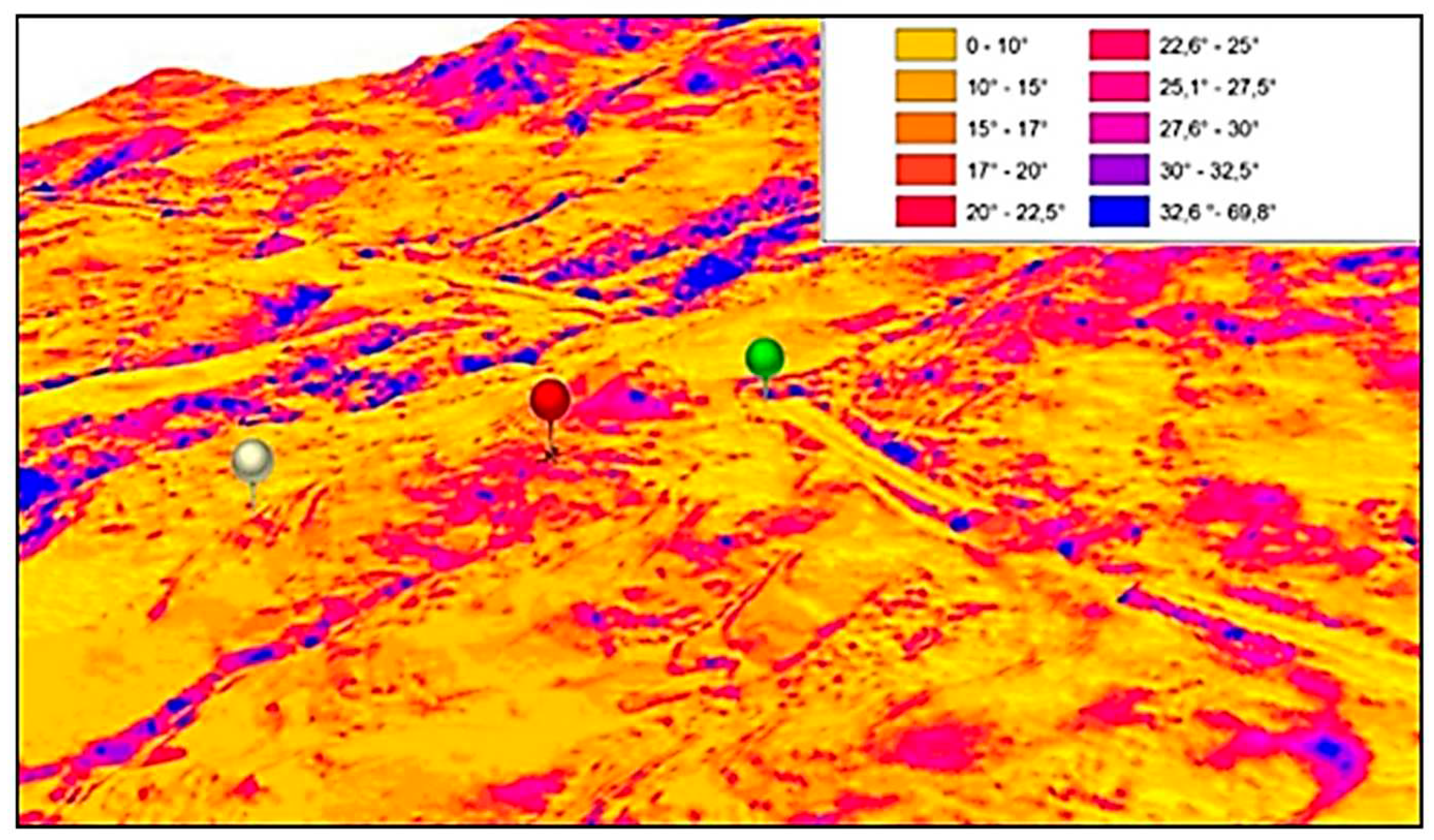
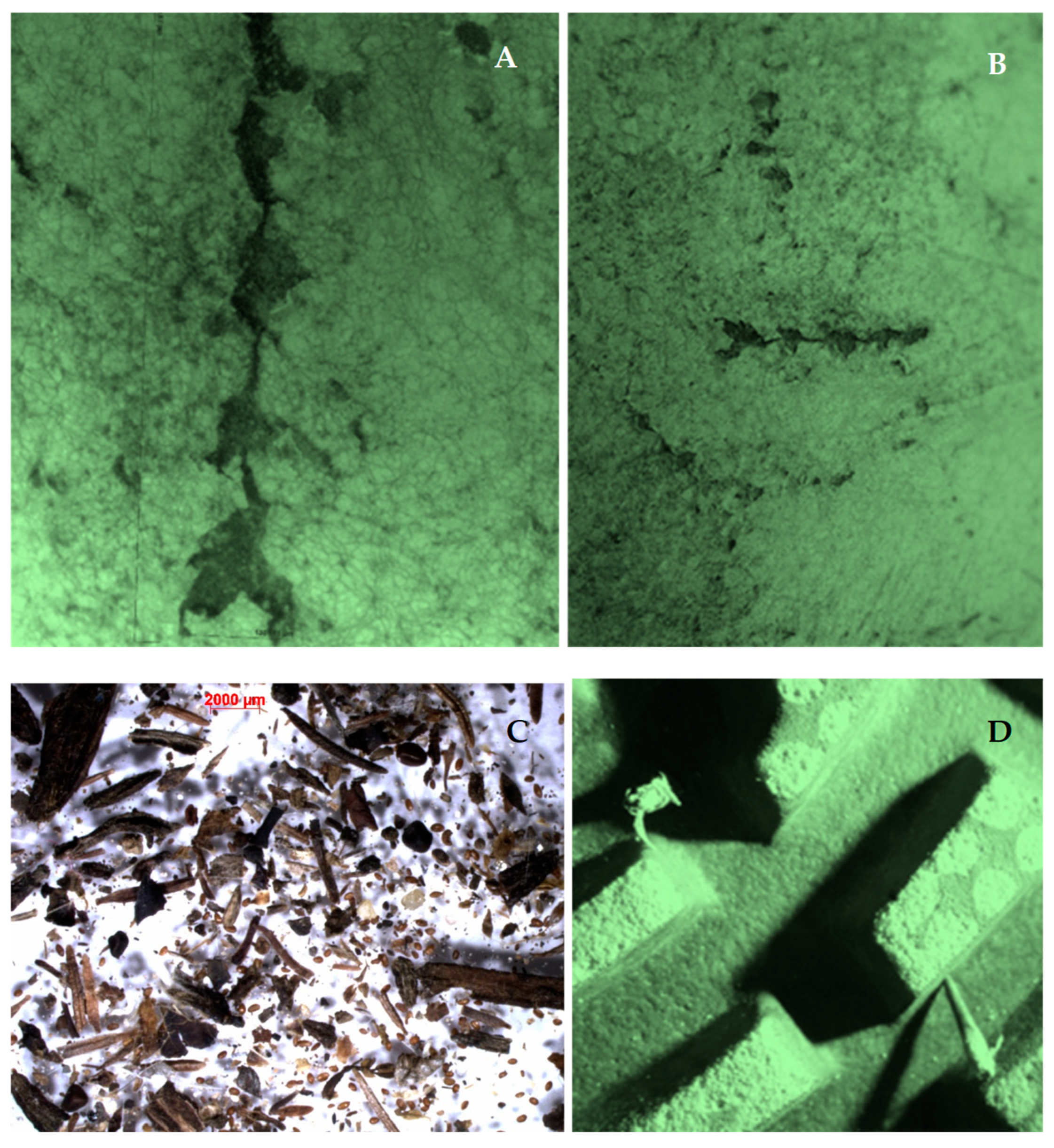
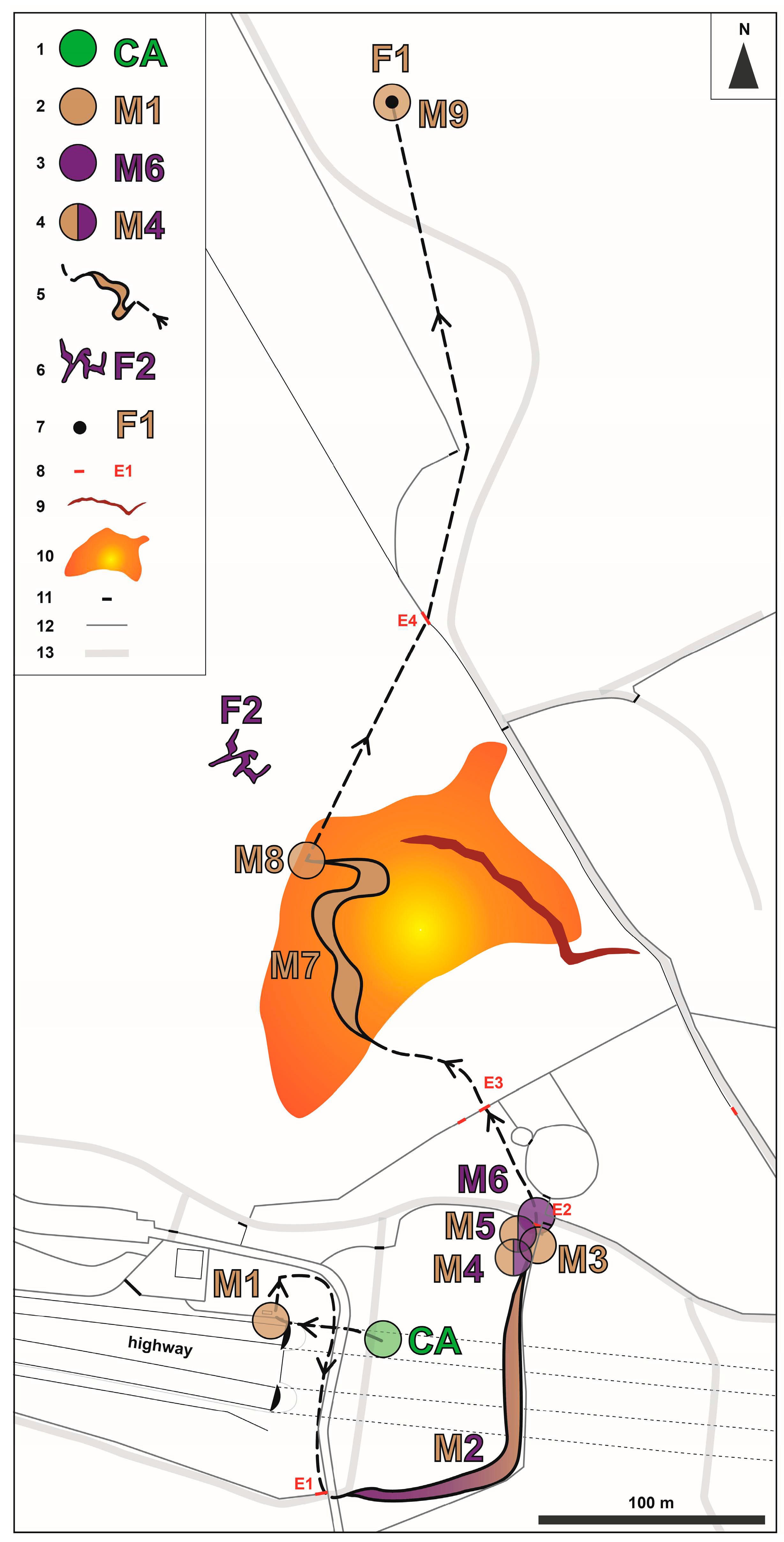
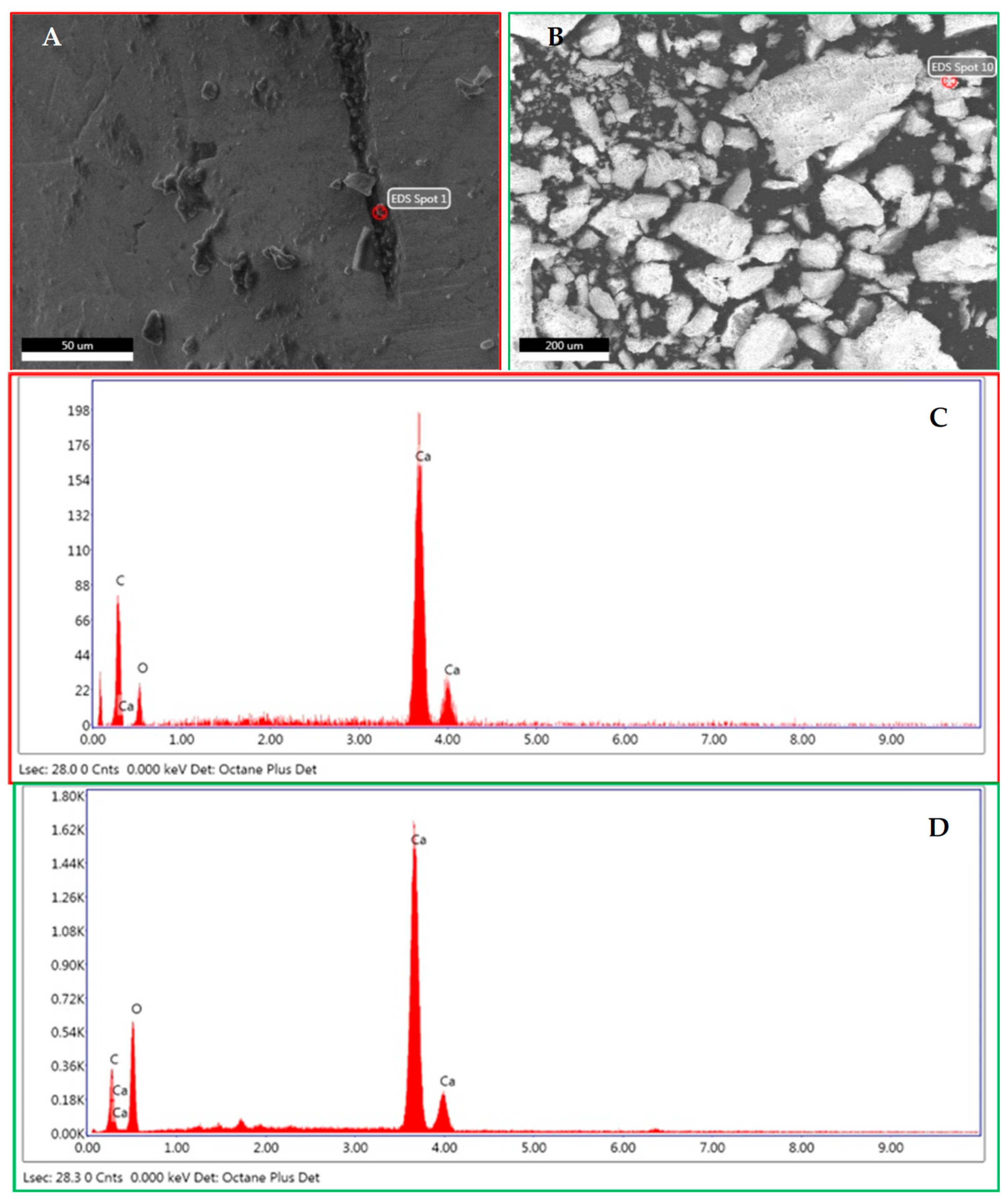
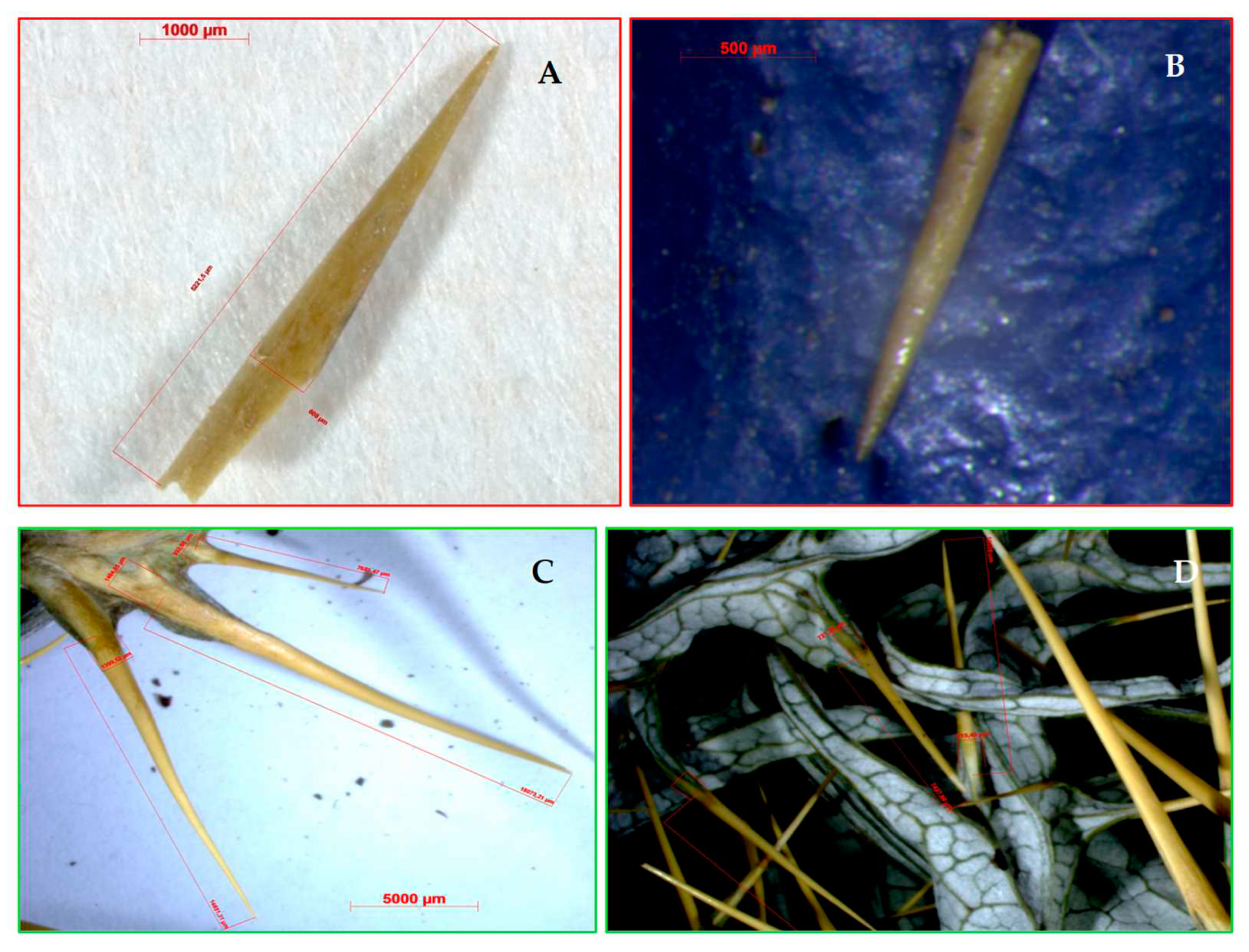
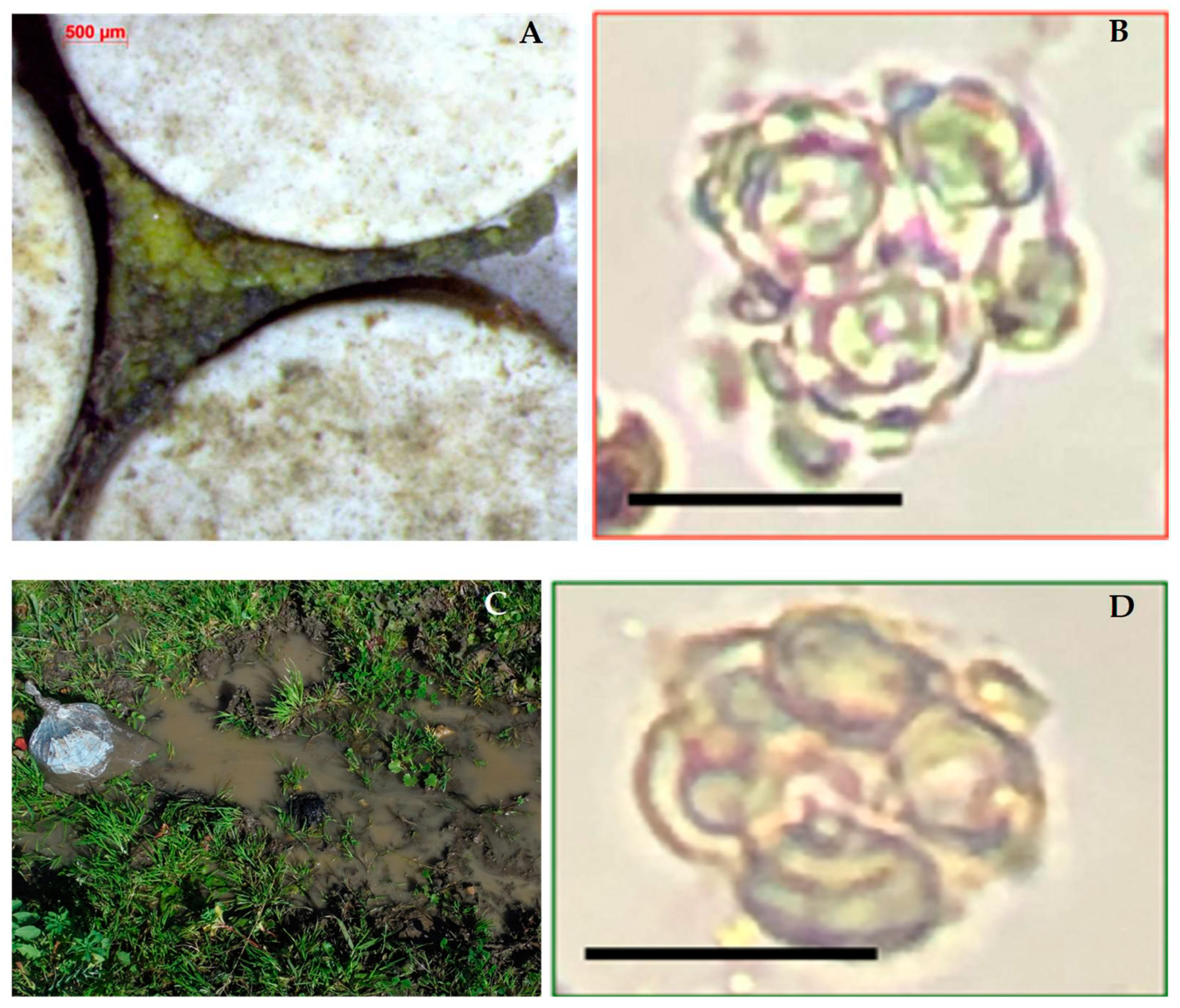
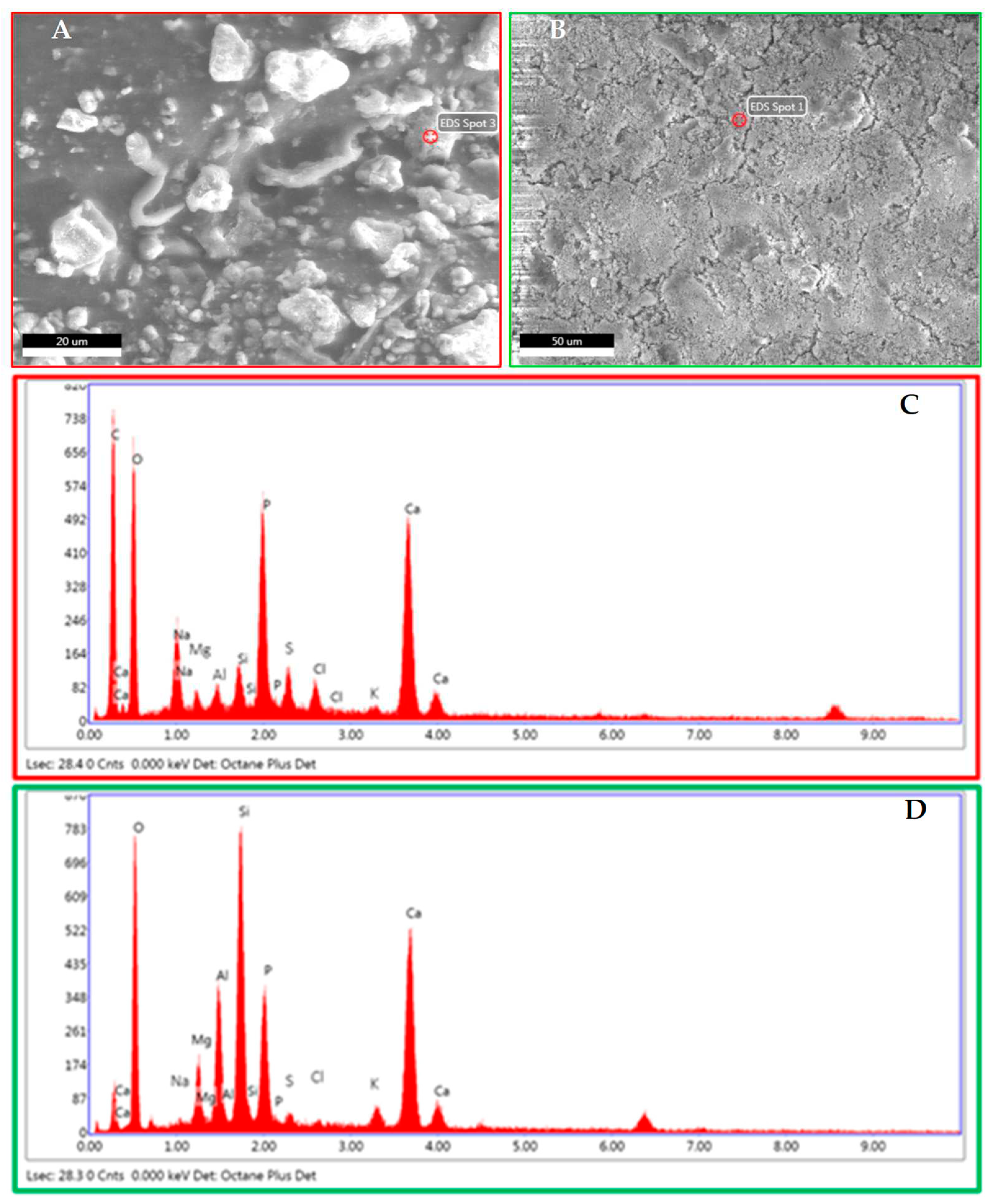
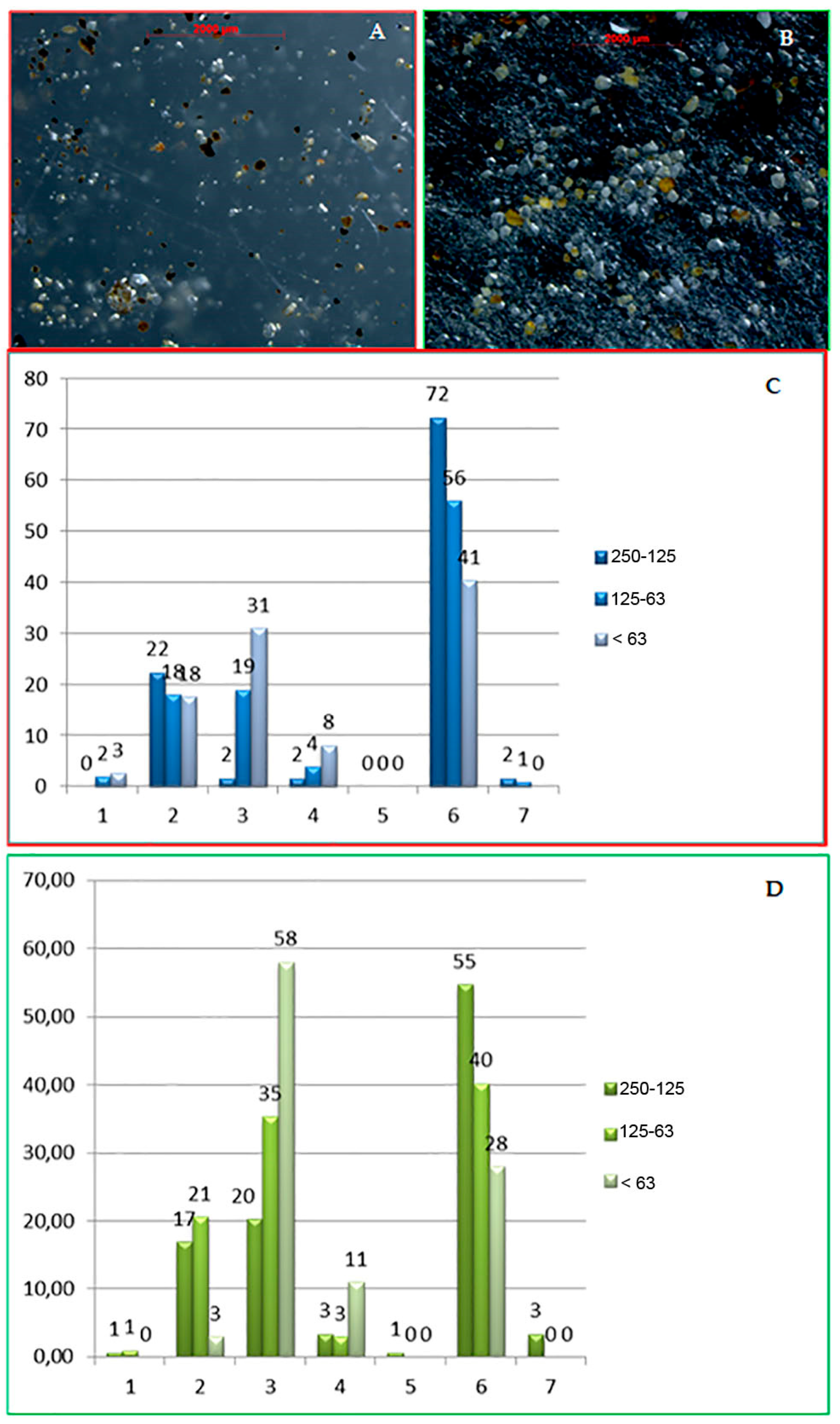
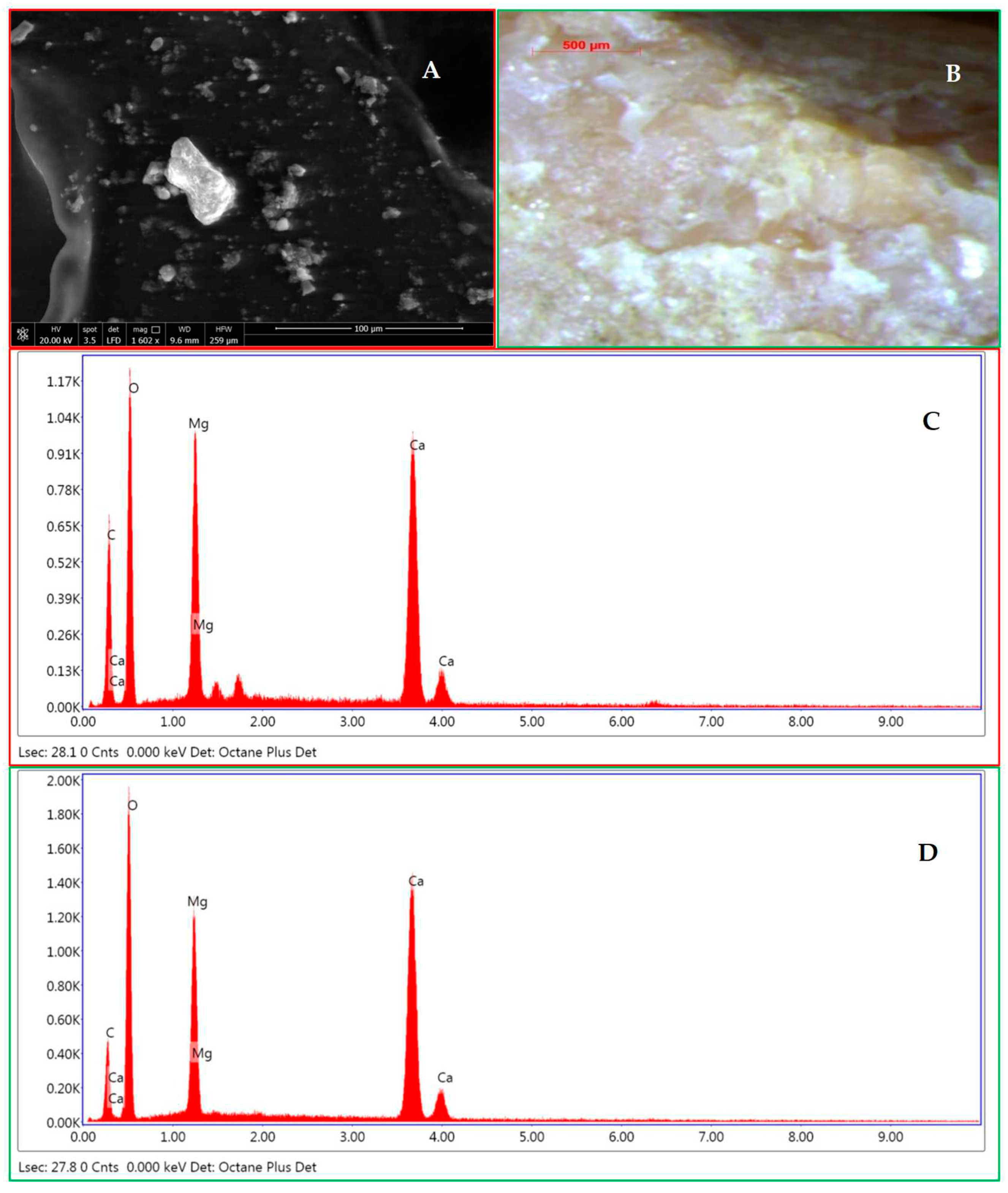
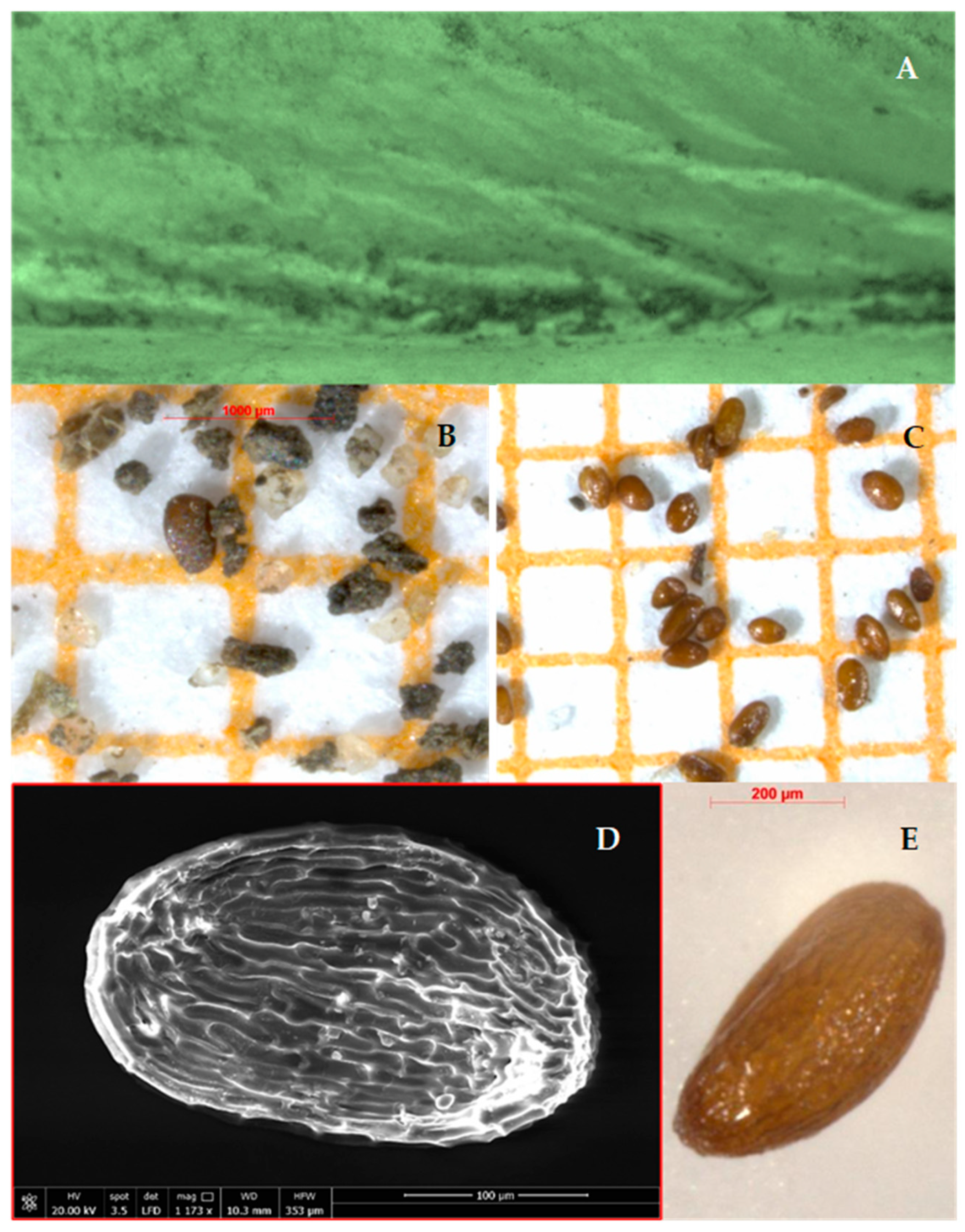
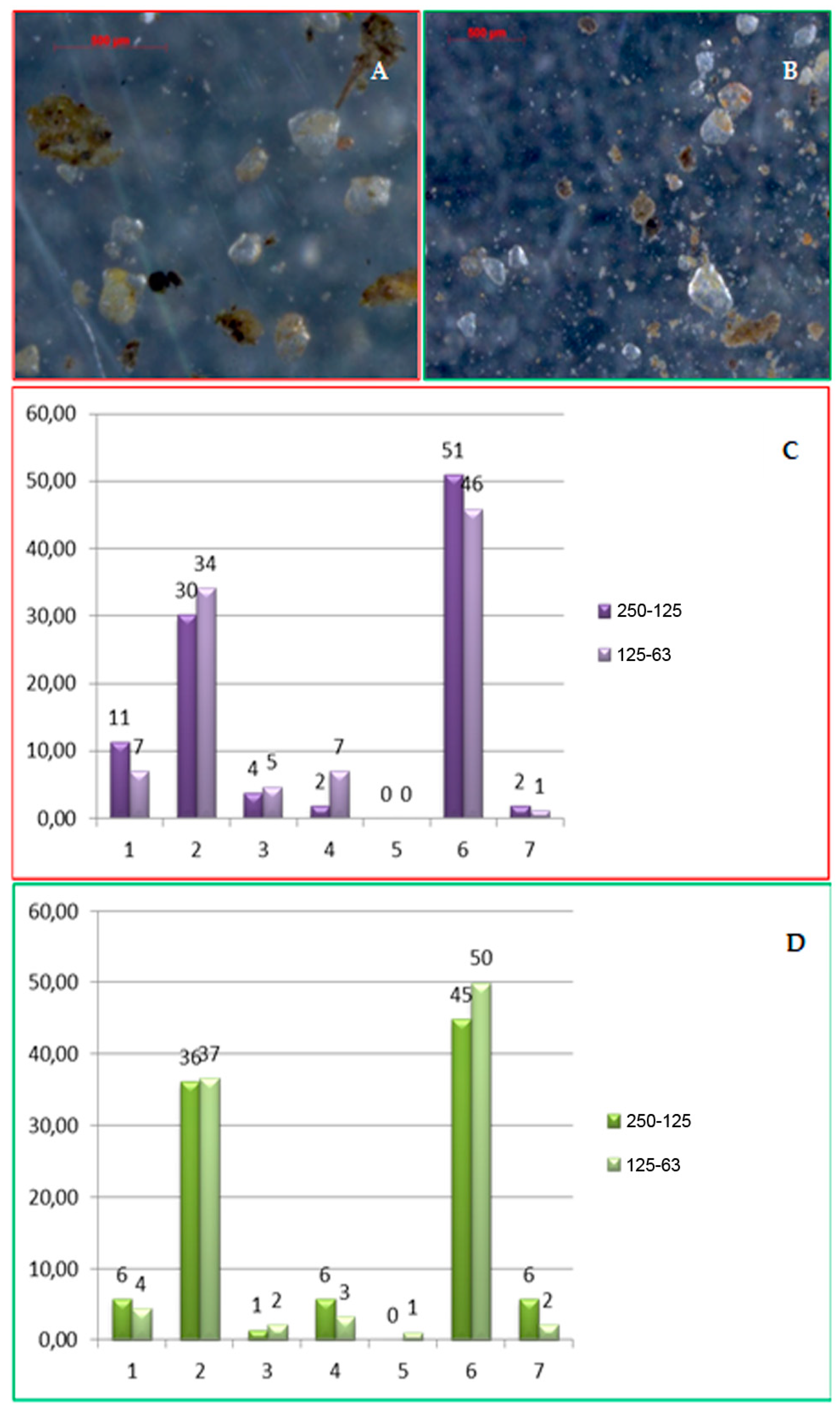
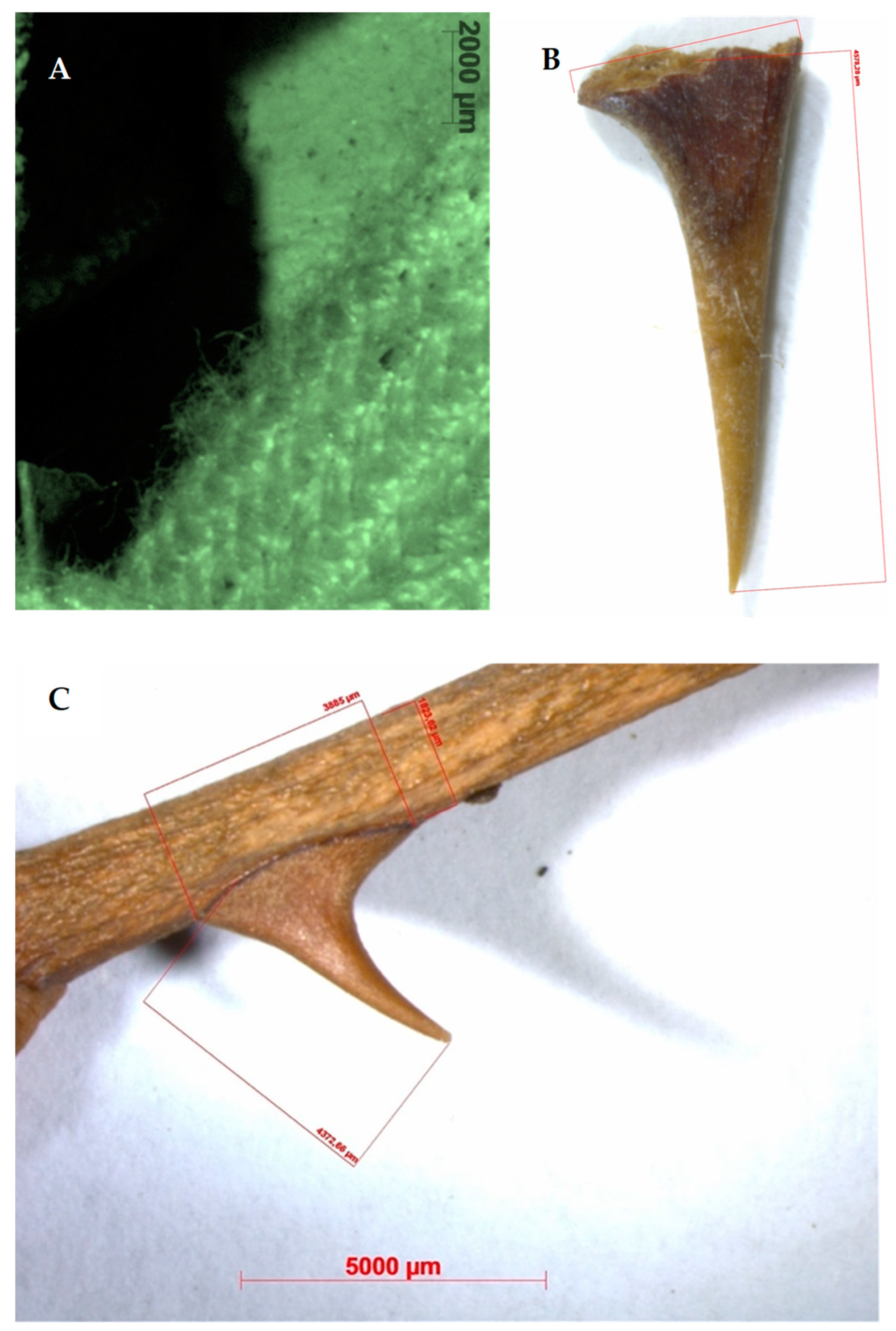
| Matrices | Methods and Techniques | Analysed Characteristics |
|---|---|---|
| Geological samples | Spectrophotometers / Munsell charts / Computational Methods | Colour |
| Geological samples | Mechanical siever / Laser Diffraction Particle Size Analyzer / Coulter counter / Particle Size Analyzer through automated microscopy and image analysis for measuring particle size and particle shape | Texture (grain size, morphology) |
| Geological samples | Optical Microscopy (OM) by stereo microscope*, in transmitted and reflected light, with tele camera and workstation for image analyses | Texture / Structure |
| Geological samples | Optical Microscopy (OM) by polarizing mi-croscope, in transmitted and reflected light, with tele camera and workstation for image analyses | Mineral composition / Texture / Structure |
| Geological samples | Powder X-Ray Diffractometry (PXRD) | Mineral composition |
| Geological samples | Scanning Electron Microscopy with Energy Dispersion System (SEM-EDS) / Quantitative Evaluation of Minerals by Scanning Electron Microscopy (QUEMSCAN) | Composition / Texture / Structure |
| Geological samples | Scanning Electron Microscopy (SEM) | Composition / Morphology |
| Geological samples (Fossils) | X-Ray Fluorescence (XRF)* | Elemental qualitative determination |
| Geological samples | µ-RAMAN spectroscopy* / FTIR spectroscopy | Molecular qualitative determination |
| Geological samples | Inductively Coupled Plasma-Mass Spectrometry (ICP-MS) / Inductively Coupled Plasma – Optical Emission Spectroscopy (ICP-OES) / Instrumental Neutron Activation Analysis (INAA) | Elemental quantitative determination |
| Class ID | Description |
|---|---|
| ID01 | Hyaline grains predominantly rounded and triangular in shape with yellow/orange coating, which gives the grains a hyaline appearance with more or less marked yellow/orange “spots” up to straw yellow / orange / reddish. |
| ID02 | Rounded hyaline grains with evidence of the original crystalline habitus with yellow/orange coating, which gives the grains a hyaline appearance with more or less marked yellow/orange “spots” up to straw yellow/orange/reddish with minor percentage of sub-angular clasts. |
| ID03 | Predominantly rounded and spherical hyaline grains without coating. |
| ID04 | Hyaline grains with rounded tabular crystalline habitus and without coating. |
| ID05 | Rare hyaline grains of smoky gray color and without coating. |
| ID06 | Rounded and spherical hyaline clasts with yellow/orange coating, which gives the clasts a hyaline appearance with more or less marked yellow/orange “spots” up to straw yellow / orange / reddish with a smaller percentage of sub-angular and lamellar grains. |
| ID07 | Opaque grains mainly yellow ocher and fossil forms (mainly benthic foraminifera) with a smaller percentage of opaque brown or light grains. |
| MPFs/Victims | Acronyms | Typology of Sites for Linking MPFs to Event Site |
|---|---|---|
| MPF 1 – MPF 2 | CA | Car accident site (Route start point) |
| MPF 1 | M1 | Match point |
| MPF 1 – MPF 2 | M2 | Match linear belt |
| MPF 1 – MPF 2 | E1 | Exit (rudimental wood gate) |
| MPF 1 | M3 | Match point |
| MPF 1 – MPF 2 | M4 | Match point |
| MPF 1 – MPF 2 | M5 | Match point |
| MPF 1 – MPF 2 | E2 | Exit (rudimental wood gate) |
| MPF 2 | M6 | Match point |
| MPF 1 – MPF 2 | E3 | Entry (hole in the barber wire perimeter) |
| MPF 1 | M7 | Match linear belt |
| MPF 1 | M8 | Match point |
| Victim 2 | F2 | Finding site of skeletonized human remains |
| MPF 1 | E4 | Exit (hole in the barber wire perimeter) |
| MPF 1 | M9 | Match point |
| Victim 1 | F1 | Finding site of human remains (Route end point) |
Disclaimer/Publisher’s Note: The statements, opinions and data contained in all publications are solely those of the individual author(s) and contributor(s) and not of MDPI and/or the editor(s). MDPI and/or the editor(s) disclaim responsibility for any injury to people or property resulting from any ideas, methods, instructions or products referred to in the content. |
© 2023 by the authors. Licensee MDPI, Basel, Switzerland. This article is an open access article distributed under the terms and conditions of the Creative Commons Attribution (CC BY) license (http://creativecommons.org/licenses/by/4.0/).





